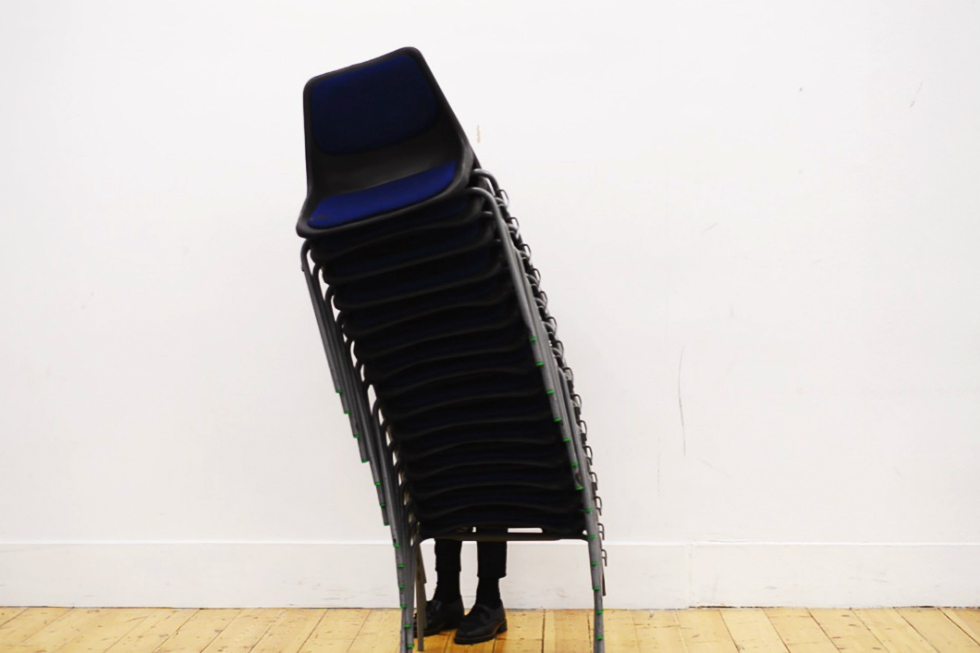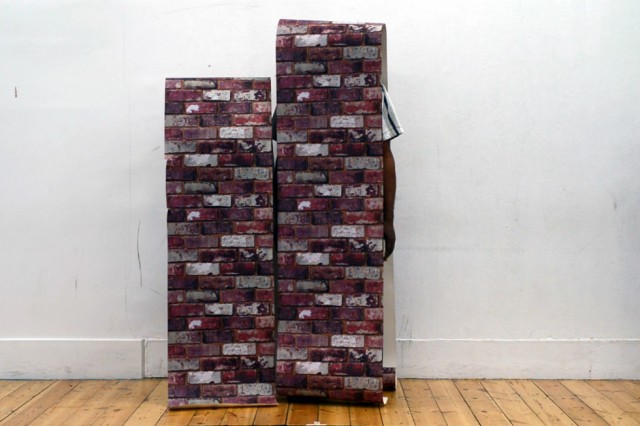“The very nature of the outsider is questioned”: OutsiderXchanges — Reviewed

Tom Emery on the OutsiderXchanges exhibition: where learning disabled and non-learning disabled artists collaborate and exhibit with equal billing. But does it do enough to banish the tired and problematic tropes of Outsider Art?
Setting aside the unfortunate spelling – which brings to mind the Xtreme branding of the late ‘90s – OutsiderXchanges tells you much of what you need to know from the name itself, as it is a collaborative project between six learning disabled artists and six non-learning disabled, emerging artists. The current iteration of the project is an exhibition at the BALTIC Centre for Contemporary Art, following on from several months of development with the artists having taken up residence at Castlefield Gallery’s New Art Spaces Chorlton.
Martin Livesey’s short documentary, The Process (2016), serves as a useful introduction, allowing the opportunity for the various artists involved to reflect and consider the project and how it has affected their work. Amanda Sutton, Director of Venture Arts (the leading organisation behind the project, which has a long history of providing positive art spaces for learning disabled people) mentions the key piece of information: part of the remit of OutsiderXchanges was to consider how best to display the work of learning disabled artists. The approach taken was that all artists should be shown with equal billing, and with no distinction made between those with and those without learning disabilities.
With much disability arts often separated from the wider contemporary art world, to display all artists here without making distinction between them alters the context of viewing, and although the artists are often very present within their work, it nonetheless becomes more possible to consider the art simply as art, without worrying about whether it has been made by an “outsider”.
This line of thinking leads to wider questions on the nature of Outsider Art. The term “outsider artist” has been problematic for some time now; partly in how the word itself literally segregates the outsiders from the rest of the contemporary art world, and it is increasingly common to see the term used outside of projects such as this one, where the very nature of the outsider is questioned. In this instance, by refusing to distinguish between outsiders and non-outsiders, everyone is able to just be an artist. Considering this idea, you may wonder whether outsider art is only outside at all because it is consistently exhibited separately from conventional, contemporary art.
Nonetheless, at times the work fits exactly what is expected from outsider art; such as with Leslie Thompson’s highly detailed drawings/assemblages (pictured, above), that you might describe (to use a commonly-used outsider art term) as naïve; where Thompson creates scenes from memory, referencing television and film from the 1970s onwards, including text as well as action figures and models. There’s a clear internal logic within these scenes, but as a viewer, you are only able to get a glimpse into how Thompson makes the associations within the work.
Barry Anthony Finan and Roseanne Robertson’s Yes Lad, Yes Lass (2016) similarly involves usage of text familiar to the cultural perception of outsider art, but in this case, put towards a mixed media sculptural work. Separated into two structures that represent Finan and Robertson, the piece concentrates on their perceptions of themselves and how they feel confident in expressing said perception. For Finan, it is through acting and words, and as such, we listen to him speak, but we also watch his actions on the monitor included within the assemblage of objects, while this monitor is surrounded by pages of handwritten notes. For Robertson, a primary mode of expression comes through music, so while we listen to her speak about this, an amp takes prominent position in the display.
This is perhaps the ideal expression of what OutsiderXchanges has been trying to achieve, with Finan and Robertson collaborating with what appears to have been an equal exchange of ideas, and while Finan’s learning disability is present within the work, it does not separate him from Robertson, and is no different from Robertson’s own identity forming part of the work’s content.
However, further considering this key concept of equal billing and standing within the exhibition, Juliet Davis, Sophie Lee and Horace Lindezey’s I was the Assembly Hall (2016, pictured below and top) raises some difficult questions. The work is a short film concentrating on Lindezey’s memories of his school days, and it makes for stimulating viewing, with Lindezey himself proving to be an interesting, funny character, and as Davis states in The Process, he has a “different relationship to life and reality” to her. But where this work stands out, is that Lindezey, as a learning disabled person, becomes the subject of the piece, with Davis and Lee not putting themselves in the same position.

This doesn’t make it an uninteresting work of art, but it does perhaps clash with the project’s goals if Lindezey becomes an artistic subject rather than an equal collaborator. Lindezey tells his story in his own words, but it’s his story — rather than a shared narrative between all three artists. It’s the only notable instance within the exhibition where it feels like an artist’s learning disability is treated as a device for magical realism, reminiscent of the tiresome media trope of the magical autistic savant.
But in raising questions, and getting viewers to consider the relationships between the various artists, and how the work of learning disabled artists is displayed, OutsiderXchanges provides a valuable entry point.
Tom Emery
See OutsiderXchanges from 1–31 October at BALTIC Centre for Contemporary Art, Gateshead; and at a Thursday Lates Party at 6pm on 3 November at the Whitworth Gallery, Manchester; and from 17 November–3 December 2016 at DaDaFest, Liverpool — all three exhibitions FREE entry
Images: top and bottom, Juliet Davis, Sophie Lee and Horace Lindezey’s I was the Assembly Hall (2016); cntre and feature image, Leslie Thompson’s drawings (2016). All courtesy OutsiderXchanges
Interested in “outsider art” terminology? Read Fetishism Or Empowerment? Inside Out — Reviewed
Watch a BBC Outreach film about Venure Arts here





